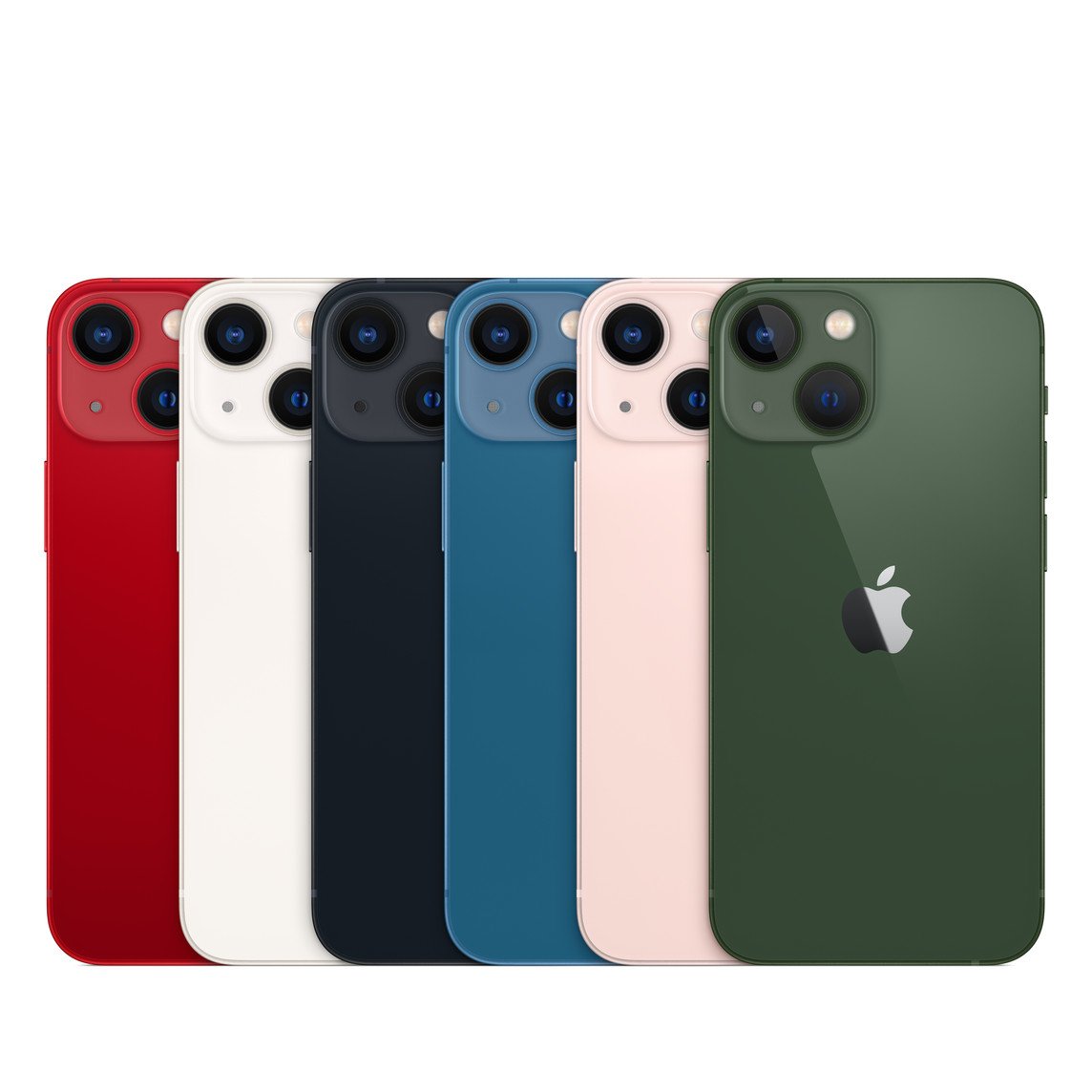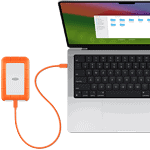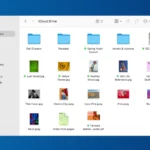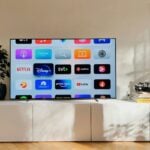If you’re looking for a truly compact iPhone that fits comfortably in one hand or slides easily into your pocket, your choices in 2025 are limited—but not nonexistent. While Apple’s focus has shifted toward larger displays and sleeker aesthetics, there’s still a market for small phones. This guide breaks down the current landscape of compact iPhones, compares key models, and explores what’s coming next from Apple.
The Legacy of the iPhone Mini
Apple launched the iPhone 12 mini in 2020 and followed up with the iPhone 13 mini in 2021, offering flagship performance in a 5.4-inch form factor. At just 131.5mm tall and 64.2mm wide, the 13 mini became a favorite among users who value portability and one-handed usability. It packed nearly all the features of the iPhone 13—like Face ID, dual cameras, and the A15 Bionic chip—but in a smaller, lighter package.
However, despite strong fan enthusiasm, the mini line struggled commercially. Reports indicated lower-than-expected sales, leading Apple to discontinue the iPhone 13 mini in September 2023. Since then, Apple hasn’t released any iPhones with screens smaller than 6.1 inches.
iPhone SE vs. iPhone 13 Mini: Which Compact iPhone Is Better?
Many shoppers torn between small devices often compare the iPhone SE (2022) with the iPhone 13 mini. Both are smaller than the standard iPhones, but they take very different approaches:
| Feature | iPhone SE (2022) | iPhone 13 mini |
|---|---|---|
| Display | 4.7″ Retina LCD | 5.4″ Super Retina OLED |
| Design | Home button, thick bezels | Edge-to-edge, Face ID |
| Processor | A15 Bionic | A15 Bionic |
| Camera | Single rear camera | Dual rear cameras |
| Charging Port | Lightning | Lightning |
| Size/Weight | 138.4 x 67.3 x 7.3 mm / 144g | 131.5 x 64.2 x 7.65 mm / 140g |
While the SE offers Touch ID and a familiar form, the 13 mini gives you a more modern, immersive experience with better cameras and a more compact frame—despite its larger screen.
iPhone 16e (2025): The New “Small” iPhone

In early 2025, Apple released the iPhone 16e, which officially replaced the SE lineup. Although it’s not a mini in the traditional sense, the 16e is now the smallest new iPhone you can buy.
Key specs:
- 6.1-inch OLED display with traditional notch (no Dynamic Island)
- A18 chip for powerful performance
- USB-C charging
- Single 48 MP rear camera
- Action Button for added functionality
- ~167g weight
While the 6.1-inch size may seem large for “compact” phone seekers, the slim bezels and light frame make it manageable for those upgrading from older devices. However, it’s still a step up in size compared to the 13 mini.
What’s Coming: iPhone 17 Air (“Slim”)
Leaked prototypes and early insider info suggest Apple will launch the iPhone 17 Air in September 2025. This device isn’t small in screen size, but it will be Apple’s thinnest and lightest iPhone yet, aimed at users who prioritize portability without compromising on display size.
Expected highlights:
- 6.6-inch ProMotion OLED display
- Just 5.5mm thick
- Weighs around 145g
- Likely to feature Dynamic Island and A19 chip
While not a return to “mini” form factors, it may satisfy users who want a featherlight phone that doesn’t feel bulky—though it likely won’t please those who want a display under 6 inches.
Summary Table: Small iPhones in 2025
| Model | Display | Dimensions (mm) | Weight | Status |
|---|---|---|---|---|
| iPhone 13 mini | 5.4″ | 131.5 x 64.2 x 7.65 | 140g | Discontinued (2023) |
| iPhone SE (2022) | 4.7″ | 138.4 x 67.3 x 7.3 | 144g | Discontinued (2024) |
| iPhone 16e | 6.1″ | 146.7 x 71.5 x 7.8 (approx) | 167g | Current compact iPhone |
| iPhone 17 Air | 6.6″ | TBD, ~5.5mm thick | ~145g | Rumored Sept 2025 release |
Final Thoughts
If you’re set on getting the smallest possible iPhone in 2025, your best bet is a used iPhone 13 mini. It’s still widely available on resale platforms and offers excellent performance with iOS updates expected through 2027 or beyond.
If you want a new iPhone that’s reasonably compact, the iPhone 16e is your only current option from Apple. It brings modern features and performance in a slightly larger body.
And if you’re open to something a bit bigger but ultra-light, keep your eye on the iPhone 17 Air, expected to push the boundaries of slimness when it launches this fall.
Key Takeaways
- The iPhone 13 mini is the smallest modern iPhone with its 5.4-inch display in a compact 131.5mm × 64.2mm body.
- Small iPhones offer easier one-handed use while still including powerful cameras and processors.
- Apple has reduced small iPhone options recently, with the iPhone SE remaining as the only other compact alternative.
Evolution of Compact iPhones
Apple’s journey with smaller iPhone models has seen significant shifts in design philosophy and market positioning. The company has navigated between meeting demands for pocket-friendly devices and the industry trend toward larger screens.
The Rise of Small iPhones
The original iPhone launched with a 3.5-inch display in 2007, tiny by today’s standards. As smartphones evolved, screen sizes grew gradually. Early models like the iPhone 4 and 5 maintained relatively compact dimensions that many users loved.
When Apple introduced the iPhone 6 with a larger 4.7-inch screen, they acknowledged some users still preferred smaller phones. This recognition led to the iPhone 5c and eventually the original iPhone SE in 2016.
The iPhone SE was specifically designed for users who wanted modern features in a smaller package. It featured the body of an iPhone 5s but contained newer internals.
The Role of iPhone SE
The iPhone SE series became Apple’s answer to the small phone market. The original 2016 model was praised for being one of the smallest smartphones available, with easy one-handed use.
In 2020, Apple released a second-generation SE. While slightly larger than its predecessor, it remained smaller than flagship models. This version combined the iPhone 8’s body with newer processors and cameras.
The SE line offered several advantages:
- Lower price point
- Longer iOS support
- Familiar design with home button
- Solid battery life for its size
The 2022 iPhone SE maintained this tradition while adding 5G support and improved durability. These models appealed to budget-conscious buyers and those who preferred compact phones.
Decline and Niche Appeal
Despite loyal fans of smaller iPhones, the market shifted dramatically toward larger screens. Apple recognized this with the iPhone 12 Mini, a 5.4-inch device that was incredibly light and compact.
The Mini series continued with the iPhone 13 Mini, which improved on battery life—a common complaint about smaller phones. However, sales figures for both Mini models fell below Apple’s expectations.
By 2022, Apple discontinued the Mini line, replacing it with the larger iPhone 14 Plus. This shift showed that small phones had become a niche market rather than mainstream preference.
Today, those seeking compact iPhones often turn to the used market for iPhone 13 Mini or SE models. These devices maintain excellent iOS support despite their age, making them viable options for small phone enthusiasts.
Design and Build Quality
The smallest iPhones stand out for their compact dimensions and premium craftsmanship. They blend cutting-edge technology with portable form factors that prioritize one-handed use.
Aesthetic and Ergonomics
The iPhone 12 mini is often considered one of Apple’s best-looking phones. It features flat edges reminiscent of the iPhone 4 era but with modern touches. At just 5.78 inches tall and 2.82 inches wide, it feels even smaller than the iPhone SE 2020 despite having a larger screen.
The mini variants weigh significantly less than their larger counterparts. The iPhone 13 mini weighs only 4.94 ounces (140 grams), making it easy to hold for long periods without hand fatigue.
Small iPhones feature edge-to-edge OLED displays with Face ID housed in a notch at the top. This design enables more screen space without increasing the phone’s physical size.
The compactness is unrivaled, making one-handed texting and navigation comfortable even for people with smaller hands.
Materials and Durability
Apple uses premium materials for its smallest iPhones. The frames are typically aerospace-grade aluminum, while the front and back feature Ceramic Shield glass that offers better drop protection than previous generations.
The small iPhones support MagSafe technology, allowing magnetic accessories to attach to the back of the device. This feature adds versatility without compromising the phone’s slim profile.
All small iPhone models are water and dust resistant with IP68 ratings. This means they can withstand submersion in up to 6 meters of water for 30 minutes.
Despite their small size, these phones don’t compromise on 5G connectivity. The antennas are carefully integrated into the frame to maintain signal strength while preserving the phone’s slim design.
The buttons and ports are precisely machined and offer tactile feedback that feels premium and responsive.
Display Technologies
iPhone displays have evolved significantly, focusing on quality and compactness. Modern small iPhones feature advanced screen technologies that deliver stunning visuals despite their compact size.
OLED and HDR Support
The smallest iPhones now come with vibrant OLED displays. The iPhone 13 mini features a Super Retina XDR display with OLED technology that produces deeper blacks and more vibrant colors than older LCD screens.
HDR support is another key feature in these compact devices. This technology allows for better contrast and more lifelike images when viewing HDR content. The iPhone 13 mini includes True Tone and P3 wide color support, making images look more natural.
Even the smaller iPhone models offer the same display quality as their larger siblings. The iPhone 12 Pro and 13 Pro models all use similar OLED technology, just in different sizes.
Screen Size and Resolution
The iPhone 13 mini sports a 5.4-inch display diagonal measurement. This makes it one of the smallest premium smartphones available in recent years.
Despite its small size, the resolution doesn’t suffer. The 13 mini offers a 2340×1080 pixel resolution at 476 ppi (pixels per inch). This high pixel density means text looks sharp and images appear crisp even on a smaller screen.
For comparison:
- iPhone 13 mini: 5.4 inches, 476 ppi
- iPhone 12 Pro: 6.1 inches, 460 ppi
- iPhone 13 Pro Max: 6.7 inches, 458 ppi
The smaller screens actually have slightly higher pixel density, making them just as sharp as the larger models.
Camera System Advancements
The iPhone mini models pack impressive camera technology into their compact frames. Despite their smaller size, these devices deliver photography and video capabilities that rival their larger counterparts.
Main Camera Features
The iPhone 13 mini features a powerful dual 12MP camera system with main and ultra-wide cameras. The main camera has an f/1.6 aperture, allowing for better low-light photography than previous models.
The ultra-wide lens offers an f/2.4 aperture with a 120° field of view, perfect for capturing landscapes or group photos in tight spaces. Users can enjoy 2x optical zoom out when switching between lenses.
Some compact iPhone models include computational photography features like Smart HDR and Deep Fusion. These technologies analyze multiple exposures to create more detailed images.
Night mode helps users take clear photos in dim conditions without flash. Portrait mode creates professional-looking photos with blurred backgrounds, even on the smallest iPhone models.
Video Recording Capabilities
Small iPhones pack serious video capabilities. Most mini models record in 4K at up to 60 frames per second, giving users flexibility for different shooting styles.
Stabilization features help create smooth footage despite the phone’s lightweight design. The smaller form factor actually makes these phones easier to hold steady during extended recording sessions.
Some models include Cinematic mode, which automatically creates depth effects and focus shifts. This feature mimics techniques used by professional filmmakers.
Dolby Vision HDR recording is available on newer mini models, adding rich color and contrast to videos. Time-lapse and slo-mo options round out the video toolkit, making these tiny devices versatile for content creators.
Front Camera Innovations
The front cameras on iPhone mini models offer impressive selfie capabilities. Most recent versions feature 12MP sensors with wide apertures for bright, clear self-portraits.
Portrait mode works on front cameras too, adding professional-looking depth effects to selfies. The front camera systems include advanced features like Night mode for taking selfies in low light.
Face ID sensors double as depth mappers, helping create more accurate portrait lighting effects. Some models support Animoji and Memoji, which track facial movements for creating animated characters.
The smaller screen size of mini iPhones actually makes one-handed selfie-taking easier. Front cameras on these devices support 4K video recording, making them useful for vlogging or video calls.
Battery Performance and Charging
Battery life is a crucial factor when choosing a small iPhone. The smallest iPhone models have made significant improvements in power efficiency despite their compact size.
Battery Capacity Comparison
The iPhone 13 mini offers noticeably better battery performance than its predecessor. While compact, it can deliver up to 17 hours of video playback on a single charge. This is a meaningful improvement over the iPhone 12 mini.
Battery health is another important consideration. Tests show that even an iPhone 13 mini with 85% battery health can compete with a brand-new iPhone 12 mini battery in some scenarios.
Many users report getting approximately 6 hours of screen-on time with the iPhone 13 mini. This makes it suitable for most daily use, though power users might need a mid-day charge.
The smaller battery capacity does mean these compact phones won’t match their larger siblings. However, they strike a good balance between size and power for average users.
Wireless and Fast Charging Technologies
Small iPhones support multiple charging options. The iPhone 13 mini features MagSafe wireless charging up to 15W and standard Qi wireless charging up to 7.5W.
MagSafe uses magnets to align perfectly with compatible chargers. This eliminates misalignment issues common with standard wireless charging pads.
The iPhone 12 mini, while similar, charges slightly slower at 12W using wireless chargers compared to the 15W capability of its successor.
Both models support fast charging via cable. With a 20W adapter, these phones can reach approximately 50% battery in 30 minutes.
For users on the go, portable power banks work well with these smaller iPhones. Their smaller batteries actually benefit from faster recharge times compared to larger iPhone models.
Connectivity and Network Options
The smallest iPhone models offer robust connectivity features despite their compact size. They include the latest wireless technologies to keep users connected no matter where they are.
5G and LTE Capabilities
The iPhone 13 mini and iPhone 12 mini both support 5G connectivity, including both sub-6 GHz and mmWave bands. This gives users access to the fastest available mobile networks in supported areas.
The devices include 4×4 MIMO technology for improved signal reception and transmission. This helps maintain strong connections even in areas with weaker coverage.
When 5G isn’t available, these phones automatically switch to Gigabit LTE with 4×4 MIMO and LAA (License Assisted Access) for fast data speeds on 4G networks.
Users can manage their cellular data usage through settings. This includes turning cellular data on/off and choosing which apps can use cellular data.
The network mode can be manually selected by going to Settings > Cellular > Network Selection.
Dual SIM and eSIM Support
Small iPhones support both physical SIM cards and eSIM technology. This dual SIM capability lets users maintain two phone numbers on one device.
The eSIM (electronic SIM) eliminates the need for a physical card. Users can activate cellular plans digitally with compatible carriers.
For travelers, the dual SIM feature is particularly useful. It allows keeping a home number while adding a local SIM when visiting another country.
Business users benefit from having separate work and personal lines on a single device. This separation helps maintain work-life balance without carrying multiple phones.
The setup process is straightforward through the iPhone settings menu. Users can designate which line to use for calls, texts, and data by default.
Software and User Experience
The software experience on small iPhones balances functionality with screen space constraints. Apple has refined iOS to work smoothly on compact displays while maintaining access to the same features found on larger models.
iOS and Feature Updates
iOS on the smallest iPhone models offers a full-featured experience despite the compact screen size. The iPhone 13 Mini runs iOS 14 and higher, which brought significant improvements to the user interface.
The smaller display does affect how content appears. On the iPhone 13 Mini, the UI elements are smaller than on standard-sized iPhones because the 5.4″ screen maintains the same logical resolution as larger 5.8″ models. This creates a more compact interface.
One-handed use is exceptional on mini iPhones. The Control Center and notification shade are easy to reach without stretching your thumb. Face ID works just as reliably as on larger models, quickly unlocking the device with a glance.
Apple typically provides 5-6 years of software updates for iPhones. This means even the smallest models receive new features and security improvements for years after purchase.
Integration with Apple Ecosystem
Small iPhones connect seamlessly with other Apple devices. AirDrop, Handoff, and Universal Clipboard work flawlessly between Macs, iPads, and compact iPhones.
Apple Watch pairing provides quick access to notifications and health tracking without removing the phone from a pocket. This combination is particularly appealing for active users who want minimal bulk.
The compact size doesn’t limit Apple Pay functionality or Home app controls for smart devices. Users can manage their entire connected home from the small screen.
iCloud integration remains robust, with photos, messages, and documents syncing across all devices. This creates a consistent experience regardless of which Apple product someone is using.
For many users, the small form factor enhances the overall experience rather than limiting it. The combination of iOS reliability and ecosystem integration makes mini iPhones practical daily drivers despite their diminutive size.
Pros and Cons of Smaller iPhones
Small iPhones like the iPhone SE and the discontinued iPhone Mini models have several advantages that make them popular with certain users.
Pros:
- One-handed use – Easier to reach all parts of the screen with one thumb
- Pocket-friendly – Fits comfortably in small pockets and bags
- Lightweight – Less strain on hands during long usage periods
- Lower price – The iPhone SE typically costs less than larger models
Many people find that smaller phones are more comfortable when they’re on the move or need to use their phone with just one hand.
Cons:
- Battery life – The main drawback is shorter battery life due to physical constraints
- Smaller screen – Less space for videos, games, and reading
- Typing experience – Keyboard is more cramped making typing harder
- Feature limitations – Some models like the SE miss premium features
Battery concerns are significant for small iPhone fans. The iPhone 12 Mini suffered from short battery life, though Apple made improvements with the 13 Mini.
Users who switched from mini models to larger phones often report noticeably better battery performance. The iPhone 13 Mini showed improvement over previous small models, but still couldn’t match larger iPhones.
For some, the compact size is worth the trade-offs. Others find the extra $200 for a Pro model with better battery life and advanced features like LiDAR and improved cameras worth the investment.
Accessories and Additional Features
The iPhone 13 mini packs powerful capabilities in its small frame while offering a wide range of accessories that enhance its functionality. It supports modern charging methods and special features that make it stand out despite its compact size.
MagSafe and Compatible Accessories
The iPhone 13 mini fully supports MagSafe technology, allowing secure attachment of various accessories. These magnetic attachments include wallets, cases, and portable battery packs that snap into place perfectly.
MagSafe chargers provide faster wireless charging than standard Qi chargers. They deliver up to 15W of power while keeping the phone properly aligned on the charging surface.
The market offers numerous iPhone 13 mini accessories from cases to screen protectors designed specifically for its smaller dimensions. These accessories are built to fit its precise 5.78-inch height and 2.82-inch width.
The box includes a USB-C to Lightning cable that supports fast charging, though users need to purchase a power adapter separately.
Unique Functionalities
The iPhone 13 mini supports Dual SIM functionality through one physical nano-SIM and one eSIM. This feature lets users maintain two phone numbers simultaneously, perfect for separating work and personal calls.
Wireless charging works with all Qi-certified chargers at up to 7.5W. For faster charging, MagSafe chargers push this to 15W despite the phone’s compact battery.
The phone weighs just 140 grams, making it one of the lightest iPhones available. Its thin 7.65mm depth makes it comfortable to hold and easy to use with one hand.
Battery life extends up to 2.5 hours longer than previous mini models. Fast charging capabilities allow it to reach 50% battery in about 30 minutes with a 20W adapter.
Environmental Impact and Sustainability
The iPhone 13 mini stands out as one of Apple’s more environmentally conscious devices. With its smaller size, this iPhone uses fewer materials overall compared to larger models.
Apple has made significant efforts to reduce the carbon footprint of its smallest iPhones. The iPhone 13 mini generates fewer emissions during production than its larger counterparts.
Meanwhile, the 2022 iPhone SE has become a standout in environmental terms. It actually produces 11kg less CO2-e than other models, making it the iPhone with the lowest carbon footprint to date.
Apple’s environmental initiatives include:
- Using recycled materials in components
- Employing clean electricity in manufacturing
- Implementing low-carbon shipping methods
- Working with suppliers through the Supplier Clean Energy Program
These efforts are part of Apple’s 2030 plan to bring net emissions to zero. The company aims to use more recycled and renewable materials throughout their product line.
Critics note that there’s still room for improvement. Some experts from Greenly suggest that Apple might be missing up to 80% of the iPhone’s total climate impact in their calculations.
The compact design of smaller iPhones like the mini and SE models means less packaging waste as well. Apple has also removed chargers and earbuds from iPhone boxes, reducing both materials and shipping emissions.
Market Trends and Consumer Preferences
The smartphone market has seen a clear shift toward larger displays in recent years. This trend has put smaller phones like the iPhone Mini in a difficult position, despite their loyal fans.
Apple’s smaller phone options have faced sales challenges. The iPhone Mini line was likely dropped due to poor sales performance compared to larger models. Many consumers now prefer screens that offer better video viewing and typing experiences.
Current iPhone Size Options (2025):
- Standard: iPhone 16 (6.1″)
- Plus: iPhone 16 Plus (6.7″)
- Pro: iPhone 16 Pro (6.1″)
- Pro Max: iPhone 16 Pro Max (6.7″)
The absence of a Mini variant speaks volumes about market demand. While some users want compact phones, most consumers vote with their wallets for larger screens.
Apple’s iPhone market share in the US continues to grow, even without small-screen options. This suggests their strategy aligns with what most customers want.
The used and refurbished iPhone market has become the main option for small phone enthusiasts. Older models like the iPhone 13 Mini remain popular among those seeking compact devices.
Launch events for new iPhones no longer feature Mini versions. The iPhone 15 series continues this trend with standard and larger Plus and Pro options only.
Regional preferences show some variation. In Europe, Apple maintains a 23% market share, with consumers showing similar preferences for larger devices.
For those who prioritize one-handed use, the standard iPhone 16 and iPhone 15 Pro remain the smallest current options in Apple’s lineup.
Frequently Asked Questions
Here are answers to common questions about the smallest iPhone models. These compact devices offer unique features and specifications that set them apart from larger iPhones.
What are the dimensions of the most compact iPhone model currently available?
The iPhone 13 mini is currently the smallest iPhone model widely available. It measures 5.18 inches (131.5 mm) in height, 2.53 inches (64.2 mm) in width, and 0.30 inches (7.65 mm) in thickness.
This compact size makes it similar to the older iPhone 5 series in terms of how it feels in hand. Many users with smaller hands find this size more comfortable to use.
How does the battery life of the smallest iPhone compare to other models?
Small iPhones typically have shorter battery life than their larger counterparts due to physical space limitations. The mini models generally provide about 2-3 hours less screen time than standard models.
With normal use, the iPhone 13 mini can last about four years before significant battery degradation. Daily battery life supports approximately 17 hours of video playback, which is less than the larger iPhone 13 models.
Some users report needing to charge their mini iPhones more frequently, especially with heavy use. This is a common trade-off for the smaller form factor.
What features are unique to the mini version of the iPhone?
The mini iPhones offer the same core features as their larger siblings but in a more compact body. They include the same processors, camera systems, and software capabilities.
One unique benefit is one-handed usability. The mini series fits comfortably in smaller hands and pockets, making it ideal for users who prioritize portability.
The mini models also maintain premium features like Face ID, wireless charging, and water resistance. There’s no functional compromise despite the smaller size.
What is the starting price for the latest small-sized iPhone?
The iPhone 13 mini started at $699 for the 128GB model when released, making it $100 less expensive than the standard iPhone 13.
Used and refurbished models now sell for significantly less, often ranging from $400-550 depending on condition and storage capacity. This makes them an affordable option for budget-conscious buyers.
As Apple has discontinued the mini line, prices may vary based on availability and retailer. Some carriers also offer special promotions on remaining stock.
Can you compare the camera specifications of the mini and regular-sized iPhones?
The camera systems in mini iPhones are identical to their standard-sized counterparts from the same generation. For example, the iPhone 13 mini features the same dual 12MP camera system as the iPhone 13.
Both include the same ultra-wide lens, photographic styles, and cinematic mode features. The front-facing TrueDepth camera is also identical across models.
The only practical difference is that viewing and editing photos might feel more comfortable on larger screens. The image quality and capabilities remain the same.
Are there any performance differences between the smaller iPhones and larger models?
There are no performance differences between mini iPhones and their larger counterparts. They use the same processors and RAM configurations.
The iPhone 13 mini contains the same A15 Bionic chip as the larger iPhone 13 models. This ensures identical app performance, gaming capabilities, and overall speed.
Some users report that smaller screens aren’t as comfortable for browsing and watching content, but this is related to screen size rather than performance. Thermal management can occasionally differ slightly due to the smaller chassis, but most users won’t notice this in daily use.







